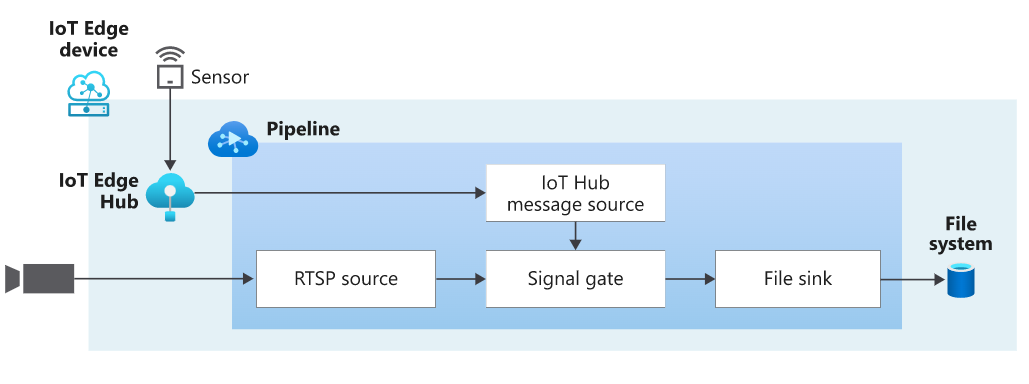Hello @Ramesh D , This is a great question on the overall Architecture implementation and how should we get started!!!
I hope the below information is helpful with your initial query.
Event-based video recording (EVR)
A few use cases related to EVR are as mentioned below;
Video recording triggered by motion detection
In this use case, you can record video clips only when there is motion detected in the video and be alerted when such a video clip is generated. This could be relevant in commercial security scenarios involving protection of critical infrastructure. EVR would help you lower storage costs.

Video recording based on events from other sources
In this use case, signals from another IoT sensor can be used to trigger recording of video. The diagram below shows a graphical representation of a pipeline that addresses this use case.

In the diagram, the external sensor sends events to the IoT Edge Hub. The events are then routed to the signal gate processor node via the IoT Hub message source node. The behavior of the signal gate processor node is the same as with the previous use case - when triggered by an event, it will open and let the live video feed flow through from the RTSP source node to the file sink node. A new MP4 file is written to the local storage of the IoT Edge device each time the gate opens.
Resilient recording : Regarding the storage of the Video recordings: one of the best solutions available!
Video Analyzer edge module supports operating under conditions where the edge device may occasionally lose connectivity with the cloud or experience a drop in available bandwidth. You can see this article to understand how the edge module can make use of your device's local storage. The localMediaCacheMaximumSizeMiB property defines how much disk space the video sink can use as a cache (1 MiB = 1024 * 1024 bytes).
Some other resources to read on this topic:
Recorded and Live Videos:
Recording and playback latencies
Low latency streaming
Quickstart: Detect motion and record video on edge devices
Quickstart: Detect motion in a (simulated) live video, record the video to the Video Analyzer account: Record to the Cloud
If the response is helpful, please click "Accept Answer" and upvote it.
Please use the below section to get further help in this matter.
